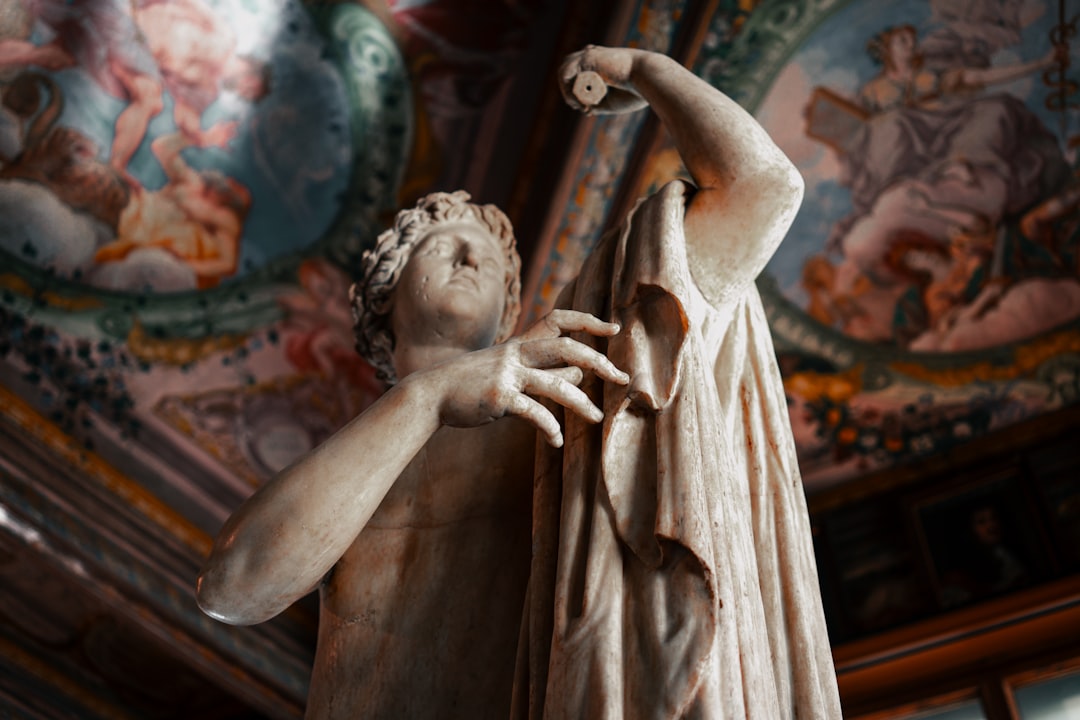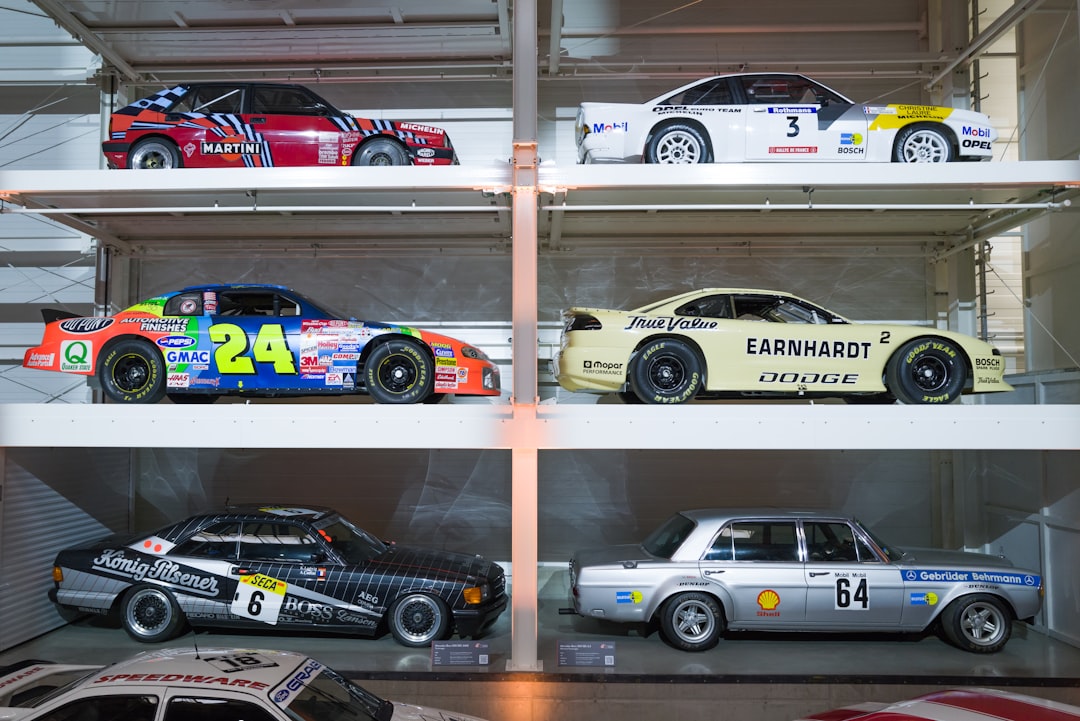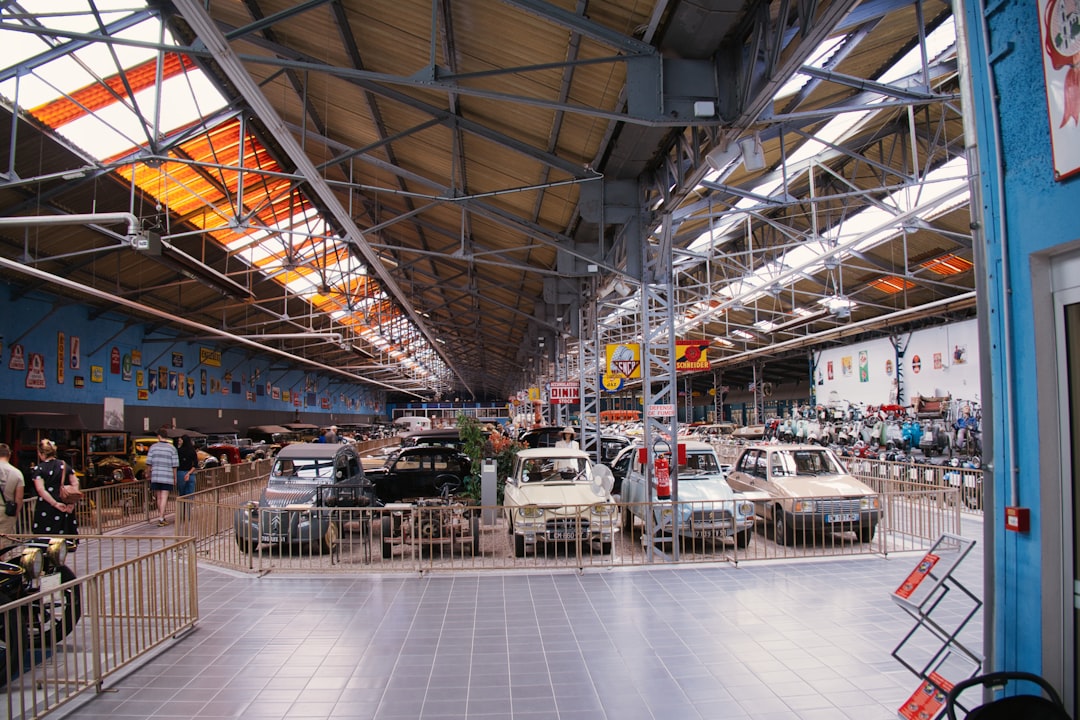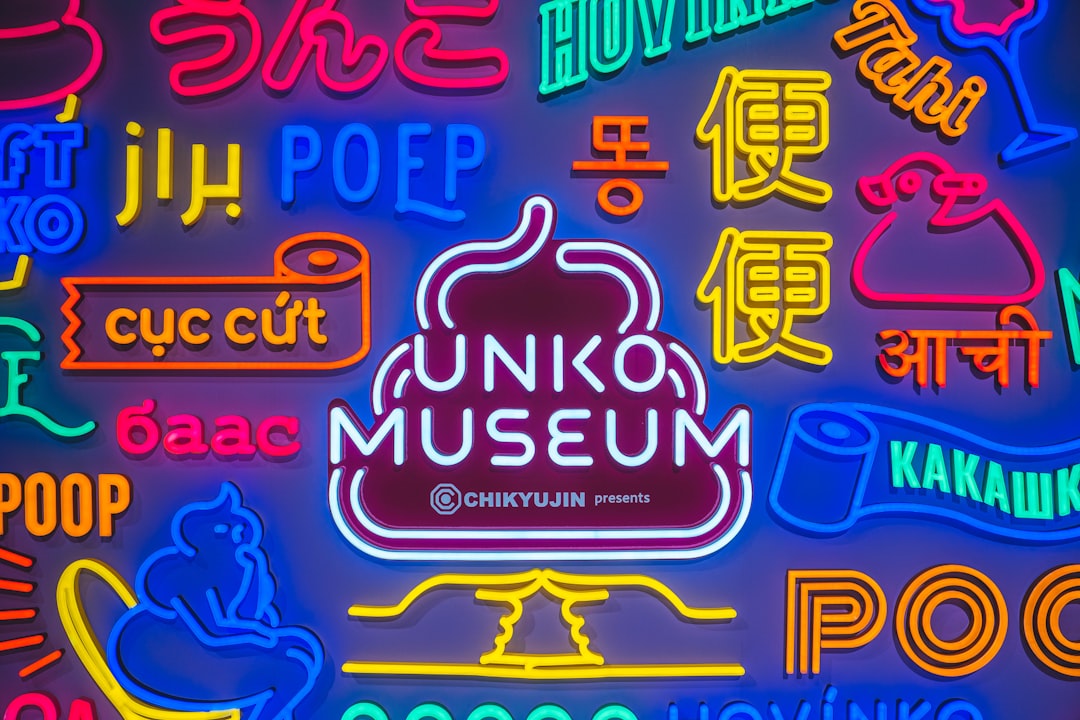

Engage prospects with a scan and streamline customer engagement with FREE QR code marketing tools by Sona – no strings attached!
Create a Free QR CodeFree consultation

No commitment

Engage prospects with a scan and streamline customer engagement with FREE QR code marketing tools by Sona – no strings attached!
Create a Free QR CodeFree consultation

No commitment
In today’s digitally driven world, QR codes have evolved from a novelty to a strategic powerhouse in bridging offline engagement with online action. For museums, QR codes represent a frictionless, highly effective way to boost visitor engagement, support digital storytelling, and enhance accessibility without requiring an app download or staff assistance. They reduce friction at key moments of curiosity, inviting visitors to dive deeper, contribute feedback, and continue learning long after they leave the gallery.
By placing scannable touchpoints throughout the visitor journey, museums can transform passive viewing into active participation. QR codes connect exhibits to videos, audio, and archival materials, guide visitors through multilingual content, and capture valuable intent signals that inform programming and marketing. With dynamic QR technology and platforms like Sona QR, every scan becomes measurable and every interaction can be nurtured across channels.

QR codes bridge the gap between physical museum exhibits and digital content, creating engaging, accessible experiences that reduce friction and increase satisfaction. They replace analog processes such as paper maps, printed brochures, and guest book sign-ins with real-time, interactive, and measurable experiences. Visitors get context instantly, curators gain data on what resonates, and marketing teams finally have a clear signal to guide follow-up communications.
To do this well, align QR deployments to clear engagement goals. Start with a set of high-value experiences that matter to your audience: deeper storytelling at the object level, mobile audio tours, multilingual access, educator resources, feedback at exit, and membership sign-ups. Then place QR codes where curiosity peaks and attention is focused. Clear calls to action, concise landing pages, and accessible design will lift scan rates and completion.
Leveraging dynamic QR solutions, museums can personalize content and automate lead capture. With Sona QR, each scan can sync to your CRM, trigger a welcome email, or add a visitor to an interest segment such as Impressionism Enthusiasts or Family Program Attendees. The result is a cohesive, visitor-centered journey that enriches interpretation and fuels continuous improvement.

The shift toward digital exhibits and more sophisticated visitor journeys exposes gaps in legacy museum marketing and interpretation. Visitors want more context and flexibility, yet traditional tools such as printed brochures or custom apps often create friction. QR codes meet people where they are: on their phones and on the move, looking for immediate and meaningful information that adapts to their needs.
QR codes also solve a data visibility problem. Thousands of visitors may engage deeply with your gallery, yet remain unknown to your institution. Without a simple way to capture interest and feedback in the moment, you lose valuable insights that could shape exhibitions, programs, and donor outreach. QR codes turn anonymous curiosity into actionable intelligence, which enables smarter content decisions and better stewardship.
As museums strive for operational efficiency, accessibility, and data-driven curation, QR technology closes engagement and measurement gaps. It equips teams to tell better stories, reach broader audiences, and connect programming to measurable outcomes such as memberships, donations, and return visits.

Choosing the right QR code format is crucial for delivering the right experience at the right moment. In museum environments, visitors will encounter codes across labels, maps, event signage, and retail. Match the format to the action you want them to take, and keep the landing experience lightweight and mobile-friendly.
Dynamic QR codes are particularly valuable in museums because they allow you to update destinations over time, run A/B tests, add UTM parameters, and track performance by placement. Static codes still have a role for evergreen content such as a public Wi-Fi login or a downloadable accessibility guide.
Dynamic QR codes managed with Sona QR let teams consolidate formats, control destinations by exhibit or date, and update experiences without reprinting labels. This makes experimentation safe and affordable.
Growth happens where curiosity is highest and visitor intentions are most diverse. Museums should place QR codes at intersections of attention: where people pause, make decisions, or express interest. Focus on high-traffic and high-intent areas first, then expand across the campus and marketing channels.
Placement is as important as content. Codes at eye level outperform those placed too low or too high. Good lighting and matte surfaces improve scanability. Each code should have a short, benefit-driven CTA and clear visual framing so visitors know what they will get from scanning.
Targeting these high-impact moments ensures your messaging aligns with each visitor’s journey. As performance data rolls in, expand to banners, transit ads, partner venues, and even local hotels to connect tourists to your museum before they arrive.

QR codes extend the story beyond the label and empower visitors to choose their path through the collection. They support a range of audience needs: deeper context for enthusiasts, clear navigation for families, and flexible access for visitors with disabilities.
Start with use cases that have immediate impact on engagement and operational efficiency, then layer in more complex experiences such as gamified tours or AR overlays. Each use case should have a measurable outcome so you can prove value and secure support for expansion.
These use cases personalize journeys and provide actionable data for future programming. They also shift the museum from one-size-fits-all interpretation to adaptive storytelling that meets people in the moment.
Each QR scan is a valuable signal. It reveals what captured attention, where interest peaked, and what content format a visitor prefers. By deploying multiple QR codes across exhibitions, events, and retail, museums can build high-fidelity audience segments that power precise follow-up and future campaigns.
Segmentation should reflect your institution’s goals and audiences. For example, distinguish between members, first-time visitors, families, educators, students, and out-of-town tourists. When scan data flows into your CRM or email platform, you can deliver the right message at the right time instead of generic blasts that miss the mark.
With Sona QR, every code is a smart entry point into your marketing engine. You can Sona retargeting playbook based on real behavior, such as visitors who watched a full curator talk or those who scanned at the gift shop but did not purchase. This reduces guesswork and increases the relevance of every communication.
QR codes are powerful connectors that tie physical experiences to digital journeys. When woven into your broader marketing strategy, they make print measurable, events interactive, and signage actionable. This unlocks a new layer of performance data that helps teams optimize spend and coordinate messaging across channels.
Museums typically rely on a mix of on-site signage, exhibition catalogs, community flyers, partner promotions, and social media. QR codes unify these efforts by capturing intent signals at each touchpoint and pushing them into a central system for analysis and follow-up.
QR codes serve as the offline onramp to your digital marketing engine. With a platform like Sona QR, you can manage codes from a single dashboard, monitor performance by channel, and sync scan data with your CRM and ad platforms so that every campaign is both engaging and measurable.
Start by defining a clear objective. Do you want to increase time-on-exhibit, capture feedback, grow memberships, or promote a new program? Your first use case should deliver visible value to visitors and measurable impact for your team. In a museum context, a strong starting goal is Scan to hear the artist or Scan for audio in your language to lift engagement and accessibility in one move.
Choose static or dynamic based on your need for flexibility and measurement. Static codes are suitable for permanent, unchanging destinations such as a public Wi-Fi login. Dynamic codes are essential for campaigns that require updates, testing, and tracking. They let you change destinations post-print and gather performance data in one place.
Start creating QR codes for free
Design for clarity and accessibility. Incorporate your brand aesthetic without compromising scannability. Use a quiet zone around the code, maintain sufficient contrast, and ensure the code size fits the viewing distance. Add a plain-language CTA that promises a benefit and sets expectations.
Roll out codes where they will be seen and scanned. Start with galleries and entrances, then expand to wayfinding, programs, and retail. Match placement to real visitor behavior: eye-level labels near high-interest objects, checkout counters for loyalty sign-ups, and stage backdrops for event RSVPs.
Tracking turns engagement into insight. Use analytics to identify top performers, spot drop-offs, and refine your approach. Iterate on CTAs, landing page layouts, and content formats. Share wins with stakeholders to build momentum and confidence in scaling.
QR codes are not just about engagement. They are a gateway to measurable outcomes that justify investment and guide decision-making. For museum teams, connecting scans to real results such as member joins, donations, and return visits is essential to prove impact and optimize spend.
Traditional tools stop at the scan count, which leaves teams guessing about influence on the visitor journey. With Sona QR and Sona.com, you can follow the thread from first scan to downstream actions. That includes enriching contact profiles in your CRM, mapping cross-channel touchpoints, and attributing revenue or membership conversions to specific campaigns.
Sona QR captures real-world engagement at the object level. Sona.com turns that engagement into insights you can act on, which helps you connect scans to revenue and make QR codes part of your performance strategy.
Sustained success comes from consistent implementation, continuous optimization, and a culture that champions scanning. Small improvements to placement, CTA clarity, and page load speed can significantly boost scan-through and completion. Train staff to point out QR experiences and explain the benefits so that visitors feel confident and curious.
When scaling across multiple galleries and programs, standardize your approach. Create a style guide for code size, placement, and CTAs. Set up tracking rules for UTM parameters. Use a centralized platform like Sona QR to manage destinations, monitor analytics, and integrate results into your CRM.
Creative deployments include QR codes on membership cards that link to exclusive content, or codes on café receipts that offer a discount in the gift shop in exchange for a quick survey. These touches increase engagement while enriching your data.

Across the sector, museums are using QR codes to deepen interpretation, broaden access, and measure impact. The most successful initiatives match QR experiences to visitor motivations and close the loop with actionable data. Even small experiments can yield useful insights that guide future investments.
Consider how each example translates to your galleries, audience size, and programming goals. Pilot in one exhibition, measure results, then roll out to more galleries with lessons learned about placement, CTA language, and content format.
These examples show how QR codes resolve pain points and enable smarter engagement. They also demonstrate the value of short, high-impact content that loads quickly and feels rewarding.
Thoughtful planning ensures your QR program achieves its full potential. A few proven practices can lift scan rates and sustain engagement through the entire visit. Likewise, avoid common mistakes that undermine scannability or disappoint visitors after the scan.
Think of QR codes as promises. The CTA sets an expectation and the landing experience must fulfill it. Keep pages light, mobile-first, and accessible. Use analytics to identify dead ends and fix them quickly.
Avoid pitfalls such as linking to heavy pages that load slowly, using tiny codes that are not scannable at typical distances, or sending users to generic homepages without a clear next step. Small adjustments here produce big gains in satisfaction and outcomes.
QR codes have become more than shortcuts; they are a strategic leap for museums seeking to unlock deeper visitor engagement, accessibility, and operational insights. By turning every artifact or sign into a digital entry point, museums deepen audience relationships and measure results with confidence. Short, well-produced content delivered at the right moment transforms curiosity into learning and loyalty.
Seamless integration of QR codes across exhibits, events, and outreach channels solves the challenge of incomplete visibility by connecting offline curiosity to online discovery. With actionable data and real-time feedback, museums avoid lost opportunities, personalize outreach, and continuously improve the visitor journey. When scans feed a centralized analytics stack such as Sona QR and Sona.com, teams can Sona revenue attribution and invest where impact is highest.
For museums ready to create connected experiences where no high-potential visitor is missed and future growth is informed by data, QR codes are the foundation of a smarter, more inclusive engagement strategy. Start with one gallery, learn quickly, and scale with confidence using dynamic codes, clear CTAs, and rigorous measurement.
QR codes have revolutionized museums by transforming static exhibits into interactive, engaging experiences that deepen visitor connection and understanding. By seamlessly linking physical displays to rich digital content, museums can acquire new audiences, enhance visitor satisfaction, and gather valuable insights into engagement patterns. Imagine knowing exactly which exhibits captivate visitors the most—and instantly updating content to keep every visit fresh and inspiring.
With Sona QR, museums can effortlessly create dynamic, trackable QR codes that provide real-time data, allow instant campaign updates without costly reprints, and connect visitor interactions directly to engagement metrics. This means every scan becomes a measurable opportunity to enrich the visitor journey and strengthen your institution’s impact.
Start for free with Sona QR today and unlock the full potential of your museum exhibits—turn every scan into a meaningful connection and a lasting impression.
QR codes can be integrated by placing them at eye level near object labels, entrances, exits, and high-traffic areas to connect visitors to videos, audio guides, multilingual content, feedback forms, and downloadable resources.
QR codes boost visitor engagement, support digital storytelling, enhance accessibility, provide real-time data on visitor interests, reduce friction by eliminating the need for app downloads, and help museums measure and optimize their programming and marketing.
QR codes deliver multilingual audio and text guides, captions, transcripts, and downloadable large print or audio materials, allowing visitors with different languages or disabilities to access content easily without requiring additional apps or assistance.
Museums use QR codes for interactive exhibit guides with videos and 3D models, gamified scavenger hunts with digital badges, instant visitor feedback surveys, educator resource downloads, membership sign-ups, and linking café receipts to discounts or surveys.
QR codes transform passive viewing into active participation by providing instant access to deeper storytelling, curator commentary, behind-the-scenes content, multilingual audio tours, and educational materials that enrich understanding and extend learning beyond the visit.
Dynamic QR codes are preferred for campaigns requiring updates, tracking, and A/B testing, while static codes work for permanent resources like Wi-Fi login or accessibility guides; formats include web links, multilingual content, feedback forms, downloadable guides, Wi-Fi access, and app downloads.
QR codes should be placed at high-curiosity points like exhibit signage near artifacts, entrances and ticketing areas, gift shops, guided tour materials, and event signage, always positioned at eye level with clear calls to action and good lighting.
Museums can track scan-through rates, dwell time, content completion, language selections, and post-scan actions such as email sign-ups or purchases using platforms like Sona QR, which provide real-time analytics and integrate with CRM systems.
Each QR scan reveals visitor interests and behaviors, enabling segmentation by content type, location, and timing; this data can sync with CRM and ad platforms to deliver personalized messaging, build lookalike audiences, and improve marketing precision.
Design QR codes with clear branding, high contrast, and concise CTAs; test for accessibility and scannability; deploy codes at eye level with glare-free surfaces; refresh content regularly; educate staff to promote scanning; and ensure landing pages are mobile-friendly and fulfill visitor expectations.
Use Sona QR's trackable codes to improve customer acquisition and engagement today.
Create Your FREE Trackable QR Code in SecondsJoin results-focused teams combining Sona Platform automation with advanced Google Ads strategies to scale lead generation

Connect your existing CRM

Free Account Enrichment

No setup fees
No commitment required

Free consultation

Get a custom Google Ads roadmap for your business






Launch campaigns that generate qualified leads in 30 days or less.
